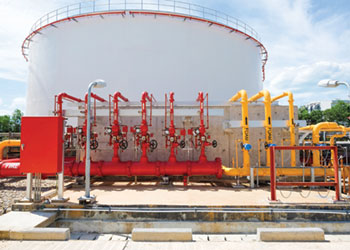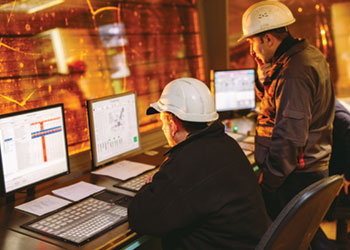
 FPS is a requirement in the oil and gas industry
FPS is a requirement in the oil and gas industry
The fire protection systems (FPS) market in the oil and gas industry is predicted to increase by 6.7 per cent annually during the period 2023–2030, making it a highly dynamic and competitive industry that is constantly evolving.
Safety management strategies in the oil and gas industry must include fire prevention systems. They necessitate a precise risk assessment, the detection of probable ignition sources, and efficient fire protection measures, says a report by MarketWatch.
Intellectual Market Insights Research forecasts the global fire protection systems market size to reach $87.6 billion by 2028 from a $59.1 billion valuation in 2021.
The market the oil and gas industry is expanding due to safety precautions and strict government restrictions.
These systems assist businesses in minimising the effects of an occurrence and preventing catastrophic losses due to fire.
There are majorly two types of FPS in the oil and gas industry: Centralised control and decentralised control. When a fire protection system is under centralised control, it is managed from a single place, while a decentralised system can be managed locally from many locations. This facilitates quick fire control, minimises damage, and increases security.
FPS is a requirement in all three segments of the industry; upstream, midstream, and downstream. However, it the FPS market is led by the upstream due to an increase globally in exploration and production (E&P) backed by rising demand for oil and gas resources. This has led the need to prevent fire threats and has fueled the expansion of the FPS industry.
Applications in the upstream include drilling, production, exploration, and transportation and storage in the midstream, while distribution, processing, and refining are examples of downstream applications. For the protection of individuals, property, and the environment, fire protection systems are crucial in all three segments.
Regionally, over the course of the forecast period, North America, Asia Pacific (APAC), Europe, the US and China are anticipated to have considerable expansion in the market for fire prevention systems in the oil and gas industry.
Some of the main drivers of market expansion include the increased emphasis on safety laws and the growing understanding of the value of fire prevention systems.
Among these regions, North America and Europe are anticipated to dominate the market due to significant investments in oil refineries, petrochemical plants, and other associated sectors.
In addition, it is anticipated that the presence of prominent companies in these areas will have a substantial impact on the expansion of the market as a whole.
Due to significant investments in shale gas reserves and the rising demand for oil and gas, the US is predicted to hold the greatest market share percentage valuation in the global market for oil and gas fire protection systems.
In terms of influence, the FPS market in oil and gas has been significantly impacted by both the continuing Russia-Ukraine war, resulting in low oil prices, broken supply chains, and decreased investments in the industry.
However, investments in the sector are anticipated to rise in the long-term, fueling market expansion.
New entrants into the market may present intense competition for established market players, and an increase in regulatory scrutiny may result in higher compliance costs.
The largest beneficiaries are likely to be companies that provide advanced, economical fire protection systems and technology.
The major players in the FPS for oil and gas include Honeywell International, Tyco International, Rockwell Automation, ABB, Schneider Electric, and Siemens. Other stakeholders include MSA Safety, 3M, Kidde Fire Systems, Johnson Controls, and Omron.
Meanwhile, new market entrants including KEVTA, Orcus Fire and Risk, and Yokogawa have appeared in recent years and are anticipated to continue growing.
These new players can contribute to the expansion of the FPS in the oil and gas sector by providing creative, scalable solutions that are tailored to the particular requirements of the growing and complex sector.
They can also work along with other players, such as oil and gas firms and governing bodies, to offer the sector a complete fire safety and risk management solution.



















































































